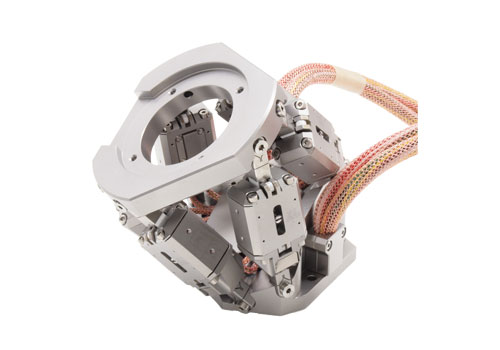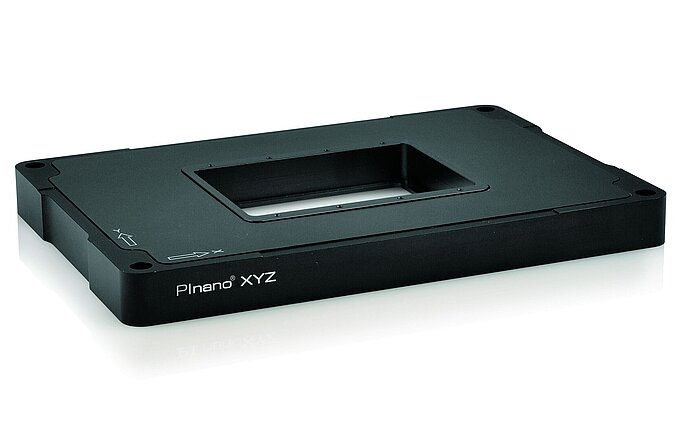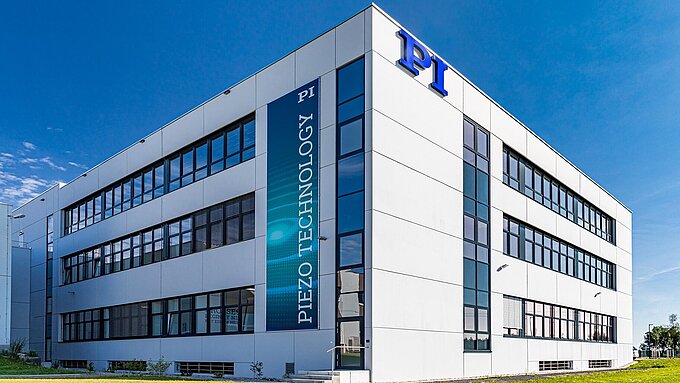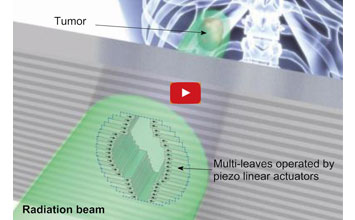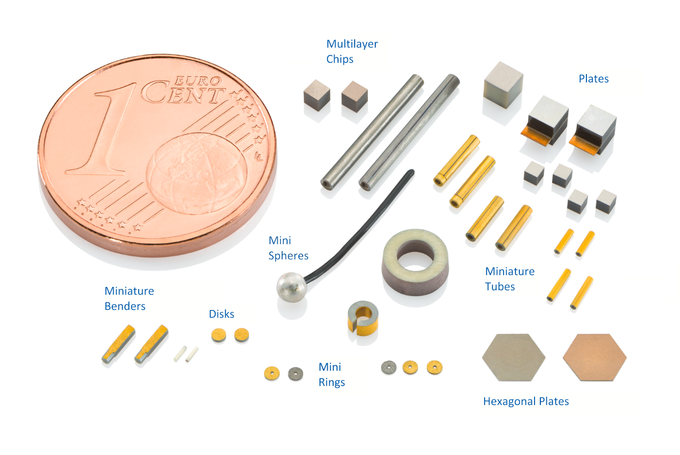Advances in medical technologies are often attributed to progress in the electronics, software and semiconductor sector, but increasingly the miniaturization of precision motion control mechanisms – often called micropositioning and nanopositioning devices – plays a key role. One class of mechanisms stands out when it comes to precision, speed and flexibility: piezoelectric nanopositioning systems.
Piezo nanopositioning systems exploit the piezoelectric effect (conversion of mechanical energy into electrical energy and vice versa) of certain materials to adjust, align, and move mechanical components with high speed and resolution down to sub-atomic levels. The piezoelectric effect can be found in natural monocrystalline materials, such as quartz. However, engineered polycrystalline ferroelectric ceramics known as PZT (Plumbum Zirconate-Titanate) provide significantly better performance.

In addition to generating precise motion, piezoelectrics can also generate and detect soundwaves, a feature commonly used in commercial applications from sonar to park distance control and very successfully in medical imaging. The capabilities of piezoelectric nano mechanisms have had dramatic and far-reaching ramifications for various medical and healthcare fields including micro pumping, precision dosing, endoscopy, genome sequencing, magnetic resonance imaging (MRI), blood analysis, and much more.
Expert geneticist Eric Topol describes the current landscape of medical technology in his book, The Creative Destruction of Medicine:
This is a new era of medicine, in which each person can be near fully defined at the individual level, instead of how we (have previously) practiced medicine at a population level…For the first time, we can digitize humans.
This description is far from hyperbole. Within the last year alone, medical experts have witnessed a revolution of advanced medical technologies built on a broad cross-section of technical expertise. Health wearables have reached new standards with potentially life-saving integrated technologies like electrocardiogram (ECG) monitors. The first ground-breaking experiments with 3D bio-printing have begun to yield dividends in terms of organ and even blood vessel recreation, thanks to outstanding precision at the cellular level. Nanopositioning systems have proven instrumental in unlocking this new era of technologically-enhanced medicine.
Here, PI explores a few astonishing examples of where nanopositioning systems have helped save lives and improve the functionalities of modern medical technologies.
Endoscopy and Piezo Nanopositioning Systems
An endoscopy is a procedure that enables examination of the inside of a patient’s body using an optical cable. Traditionally limited to visualizing the esophagus, stomach, or bowel, endoscopes are now able to examine most hollow organs or cavities in the human body. This is primarily due to technological enhancements to the endoscope itself.
There is a niche available in endoscopy for nanopositioning systems like piezo inertia drives; a single space-saving piezoelectric actuator can be used to position lenses for zoom and focus control with high precision. This could prove vital for next-generation, rigid chip-on-the-tip endoscopes where there is potential for piezo-based actuators to connect the optics to the image processing chip to facilitate variable focusing and zoom functions.
Another piezo based solution for endoscopy makes use of small ceramic tubes that can bend in two dimensions, guiding and scanning an optical fiber to generate an image with high resolution.
Laser eye surgery has been a staple of ophthalmic surgery for decades, but high-precision nanopositioning systems have unlocked new standards of accuracy for laser beam control in eye treatment applications. PI offers advanced active optics based on friction-free flexure guides and solid-state piezo drives, which can accurately shape a patient’s cornea through precision laser surgery methods.
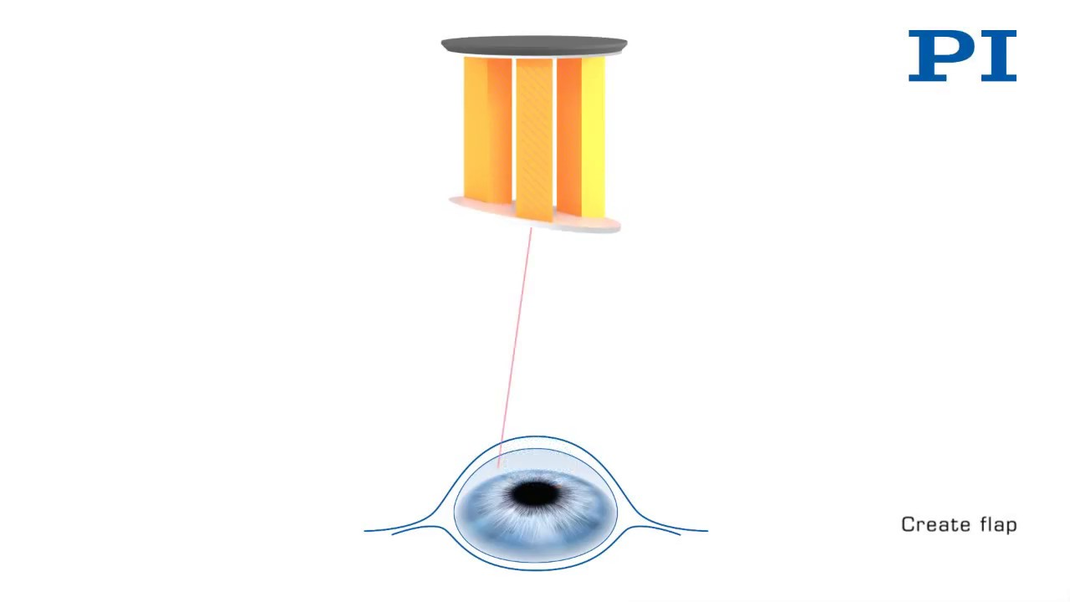
Magnetic resonance is a medical imaging technology that produces a scan of areas of interest without optical technologies. It relies on the induction of a high-strength magnetic field (up to 3 teslas) and directed radio waves to acquire exquisitely detailed images of soft tissue with extreme anatomic detail. This requires mechanical drives capable of operating within those conditions.
Piezoelectric nanopositioning drives are not affected by the strong magnetic fields induced in an MRI scanner. They also exhibit no magnetic effects of their own, mitigating the risk of magnetic interference.
PI offers a choice of nanopositioning systems and drive technologies suitable for integration into MRI systems, including:
- Ceramic-insulated piezo stack actuators for short travel ranges (<1mm)
- Piezo stepping motors for longer travel ranges
More information is available here: “Automated tuning of an eight-channel cardiac transceive array at 7 tesla using piezoelectric actuators”
Nanopositioning Systems from PI
PI is a world leader in the design, manufacture, and supply of advanced nanopositioning systems for cutting edge areas of application. Those mentioned above are just a selection of the systems we supply for medical markets. If you would like to learn more, simply contact a member of the PI team today.
References: Creative Destruction of Medicine: How the Digital Revolution Will Create Better Health Care, Eric Topol, (2013, Basic Books) ISBN: 978-0465061839
Blog Categories
- Aero-Space
- Air Bearing Stages, Components, Systems
- Astronomy
- Automation, Nano-Automation
- Beamline Instrumentation
- Bio-Medical
- Hexapods
- Imaging & Microscopy
- Laser Machining, Processing
- Linear Actuators
- Linear Motor, Positioning System
- Metrology
- Microscopy
- Motorized Precision Positioners
- Multi-Axis Motion
- Nanopositioning
- Photonics
- Piezo Actuators, Motors
- Piezo Mechanics
- Piezo Transducers / Sensors
- Precision Machining
- Semicon
- Software Tools
- UHV Positioning Stage
- Voice Coil Linear Actuator
- X-Ray Spectroscopy




